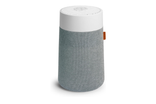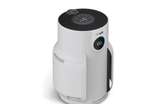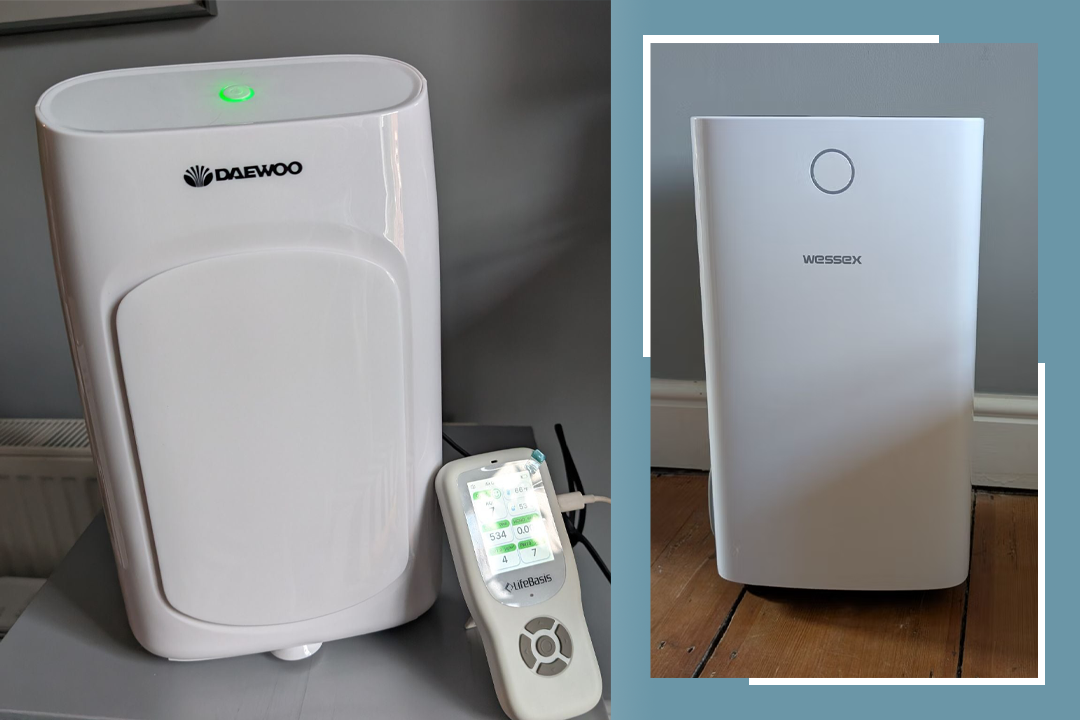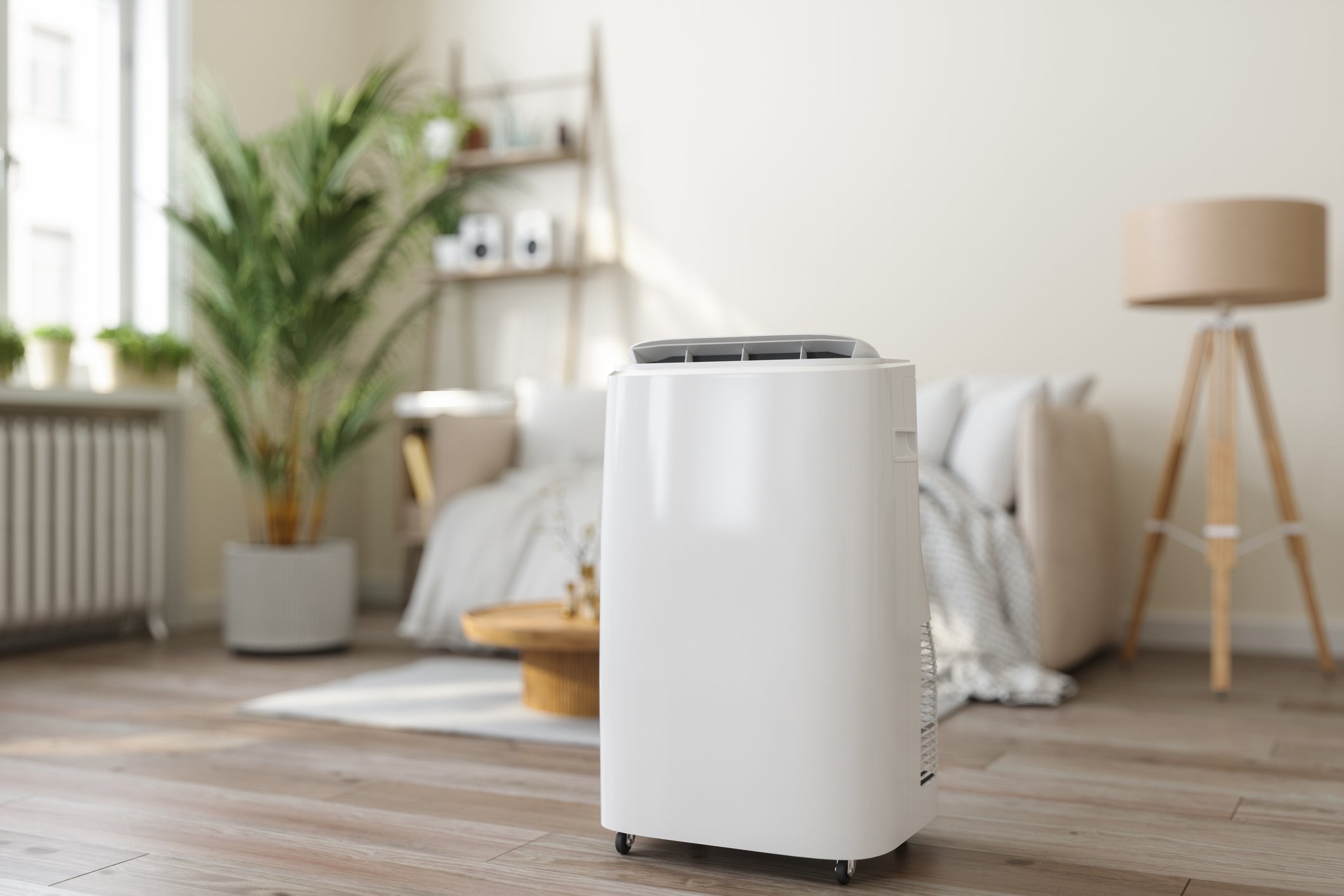The Independent's journalism is supported by our readers. When you purchase through links on our site, we may earn commission. Why trust us?
Best air purifiers to help free your home from dust and allergens, tried and tested
To help with allergy relief, I’ve found the best air purifiers with smart features, HEPA filters and more
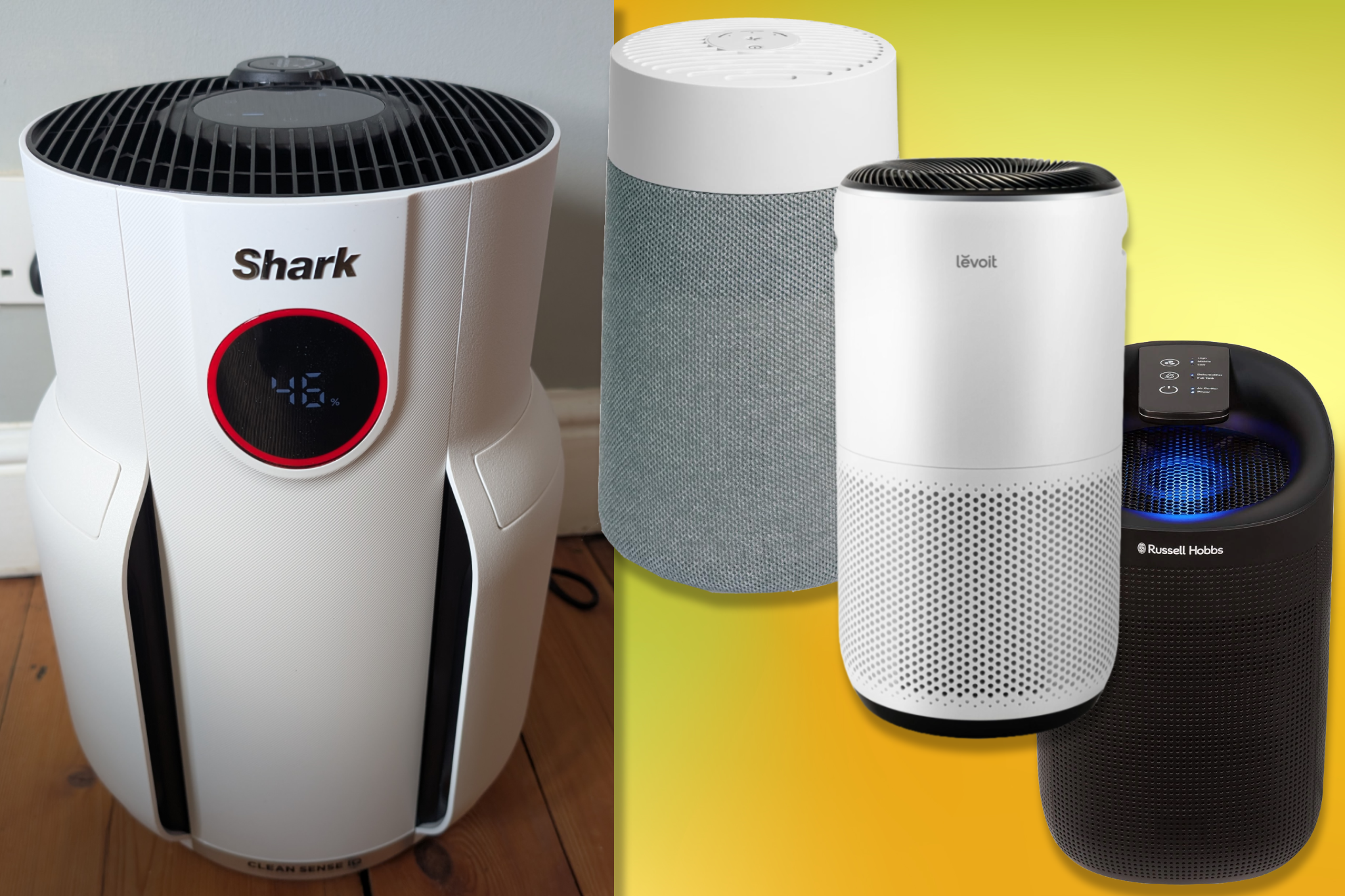
The best air purifiers offer more benefits than you might expect. By capturing and neutralising airborne pollutants, pollen, dust mites, and pet dander, they can improve indoor air quality, make breathing easier, reduce sneezing, and help prevent allergy and irritation flare-ups. As Henry Burridge, associate professor in environmental fluid mechanics at Imperial College London explains to me: homes can be surprisingly polluted. “A pollutant that's more prevalent in homes than really any other indoor environment are mould spores from black mould,” he says. “We create a lot of moisture in homes, from bathing and showering to washing and drying clothes.”
Modern air purifiers are stylish, quiet, and full of smart features. Many come with app or voice control, real-time air quality displays, and sleep modes with soft lighting, perfect for bedrooms and nurseries, and they often outperform natural ventilation. “When you open a window, you bring in outdoor air, which might be clean if you live in the countryside, but in a city it can also bring in more particulate matter,” explains Burridge. “An air purifier is actually trying to clean the air, so it can be the better strategy.”
When selecting an air purifier, there are a few key points to consider. HEPA filters are highly effective, trapping approximately 99.97 per cent of airborne particles. Activated carbon filters help remove odours and gases, while UV-C and photocatalytic filters can eliminate bacteria and viruses
Not all air purifier technology is equally effective, however. “If I was buying an air purifier, I would only stick to a filter-based air purifier,” Burridge says. “They’re tried, they’re tested, they’re very well established – filter-based purifiers are very robust ways of getting rid of small particles that are in the air, but I would also look for the clean air delivery rate (CADR) through the filter system”. He also notes that while HEPA filters are excellent, they’re at the “upper end” of what most homes actually need.
There’s a lot to consider. That’s why I’ve found the best air purifiers through rigorous testing. My pick of the bunch is the Levoit core 400S air purifier (£197.99, Amazon.co.uk) but there are plenty of other great options to consider, whether you're looking to relieve allergies, freshen up pet-filled rooms, or just want peace of mind that your indoor air is as clean as possible. Keep reading to find the ones that impressed during testing.
How I tested
For context, I’m an allergy sufferer. I have hayfever and am constantly looking for ways to alleviate my symptoms. As such, I’m the perfect candidate for this test.
.jpg)
I tested each of these air purifiers within my home, trialling all the settings to get a full picture of performance. I assessed the following key metrics:
- Air quality: I used an air quality monitor to get real-time data on air particles and VOCs (volatile organic compounds) during testing. The best air purifiers remove these unwanted pollutants. I also timed the air purifiers as they cleaned the air to see how quickly they made a difference.
- Allergies and sensitivities: I assessed health and hygiene. Did I still get the sniffles if the air purifier claimed to be able to suck up allergens?
- Noise: I used a decibel metre to measure the noise of these air purifiers. The best models are so quiet that you barely notice them, enabling you to keep them running overnight.
- Ease of use: I assessed how easy each air purifier was to use, and the performance of its smart features, such as air monitoring.
- Style: Most air purifiers need to be out on display, so I looked for functional but fashionable appliances that won’t ruin your interior design.
- Value for money: I considered the initial cost of the air purifier, as well as how much the filters are to replace and the cost of running the machine.
Not all of the models that I tested made the final list – below are the best air purifiers you can rely on within your home.
Why you can trust IndyBest reviews
Our expert tester, Joanne Lewsley, has been testing air purifiers and other air quality appliances for more than a decade, so she knows exactly what makes for a good air purifier. She has consulted experts on what to look out for, and all of her reviews are based on independent opinion and real-life testing. She’s particularly well placed for this review since she suffers from allergies.
The wider IndyBest team also reviewed individual air purifier models, such as Dyson’s purifier. Additionally, our experts have given in-depth insight on other air-quality-related items, such as dehumidifiers, air fresheners and humidifiers. These gadgets can also be used for other chores, such as drying clothes in a more energy- and cost-effective way.
The best air purifiers for 2025 are:
- Best overall – Levoit core 400S air purifier: £197.99, Amazon.co.uk
- Best budget air purifier – Coway airmega 50: £55.99. Amazon.co.uk
- Best for large rooms – MeacoClean CA-Hepa 76x5 wifi air purifier: £199.99, Amazon.co.uk
- Best high-end purifier – Dyson purifier cool PC1 air purifier: £449.99, Dyson.co.uk
- Best for small rooms – Blueair blue mini max air purifier: £74.99, Amazon.co.uk
1Levoit core 400S air purifier

- Best Air purifier overall
- CADR 400 cubic metres per hour
- Room size 83 sq m
- Control No
- Dimensions 27.43cm x 27.43cm x 52.07cm
- Weight 5.8kg
- Energy consumption 36W
- Warranty 2 years
- Noise level 24-60dB
- Filter type Pre-filter, filter, activated carbon filter
- Why we love it
- Good app integration
- Fast air-purifying
- Quiet
- Take note
- No longer uses a HEPA filter
This model ticks a lot of boxes, so it’s no surprise that I found it to be the best air purifier overall. It was quick at purifying the air in my home, even in large spaces. But it’s also unbelievably quiet – even on the highest speed setting, I could barely hear it at all.
It uses a three-stage filtration system, which includes a pre-filter for larger particles, a primary filter for dust and mould, and an activated carbon filter for odour reduction, which is excellent at reducing smells from cooking or from pets.

I found the automatic mode neat, cleaning the air without intervention. It’s a remarkably responsive machine, speeding up when it detects particulates and slowing down when the air is clean. It’s so responsive, in fact, that it even ramped up the power whenever my dog walked into the room.
I also loved the smart functionality – it was great being able to set up scenes in the VeSync app, turn on the air purifier before I even entered my home, and use Alexa to turn it on when I was too lazy to get to the unit. Best of all? It’s very affordable for the sheer value it delivers, although the replacement filters can be pricey.
2Coway airmega 50 air purifier
.png?quality=75&width=703&crop=3%3A2%2Csmart&auto=webp)
- Best Budget air purifier
- CADR 120 cubic metres per hour
- Room size Up to 31 sq m
- Control Auto, touch, smart air sensor
- Dimensions 17cm x 17cm x 32cm
- Weight 1.6kg
- Energy consumption Up to 14W
- Warranty 2 years
- Noise level 18-44dB
- Filter type Pre-filter, filter and deodorisation filter
- Why we love it
- Air quality indicator
- Features night light
- Filters last for eight months
- Take note
- No wifi or app control
- Not as effective on lower modes
If you're looking for a quiet, compact air purifier on a budget, the Coway airmega 50 air purifier is hard to beat. Designed with smaller spaces in mind, this unit is light enough to move from room to room, yet powerful enough to clean up to 31 square metres, making it just about right for every room in the average British home.
What I liked most during testing was the real-time air quality indicator, which uses a coloured light to show how clean the air is (blue indicates good, green for moderate, amber for bad and pink for very bad). It’s a small touch, but one that gives instant reassurance.
It’s also a great option for kids’ bedrooms thanks to the built-in nightlight, which gives off a gentle glow that’s ideal for relaxing bedtime routines or little ones scared of the dark.

The Coway airmega 50 air purifier has a smart sensor that automatically adjusts the fan speed depending on the air quality. It’s also incredibly quiet on its lowest setting, so it’s great for overnight use.
While it doesn’t come with app connectivity or wifi features, the filter lasts eight months, and the unit uses very little power, making it energy-efficient enough to leave running for extended periods. Just bear in mind it’s most effective on its higher settings – so if you live in a high-traffic area, you might want to run it at full speed before bedtime.
Overall, this is a brilliant choice for those on tighter budgets. There are still cheaper options – the Daewoo purifier below, for instance – but those models only work on fairly small rooms. For most homes, this is the best budget air purifier.
3MeacoClean CA-Hepa 76x5 wifi air purifier

- Best Air purifier for large rooms
- CADR 360 cubic metres per hour
- Room size Up to 53 sq m
- Control App, touch button
- Dimensions 49.7cm x 30.3cm x 27cm
- Weight 4.6kg
- Energy consumption Up to 50W
- Warranty 2 years
- Noise level 25-56dB
- Filter type HEPA H13, activated carbon
- Why we love it
- App lets you see the air quality outside
- Powerful filtration for large rooms
- Real-time air quality monitor
- Great for pet owners and hay fever sufferers
- Take note
- Can be noisy at higher fan speeds
With its sleek white casing and high-performance filtration, the MeacoClean CA-Hepa 76x5 wifi air purifier is a solid pick for larger households or anyone battling indoor allergens. It uses a multi-layered HEPA H13 and charcoal filter, UV-C sterilisation, and an ioniser to tackle everything from pollen to cooking smells. With a 360 cubic metres per hour CADR, it’s powerful enough to clear the air in an open-plan space or large living room.

It’s not so heavy that you can’t move it from room to room, and it comes with a sturdy handle, making it easy to transport. You can control it via the Meaco app, which is easy to set up and shows real-time air quality readings, local weather and even energy usage. You can also switch between modes or fan speeds on your phone, or simply use the nicely designed touch-control pad at the top of the device.
It also comes with an ‘anion’ function, which releases negative ions into the air. These tiny charged particles stick to dust, pollen, and smoke in the air, causing them to clump together. This helps the air purifier catch them more easily in its filter, or they fall out of the air and onto the floor, making the air cleaner and easier to breathe.
So, if you’re looking for a high-performance purifier with app control and advanced filtration technology, the MeacoClean 76x5 ticks all the right boxes.
4Levoit core 600S smart air purifier

- Best Smart air purifier
- CADR 400 cubic metres per hour
- Room size Up to 83 sq m
- Control Touch panel, app, Alexa/Google voice
- Dimensions 27.4cm x 27.4cm x 51.9cm
- Weight 5kg
- Energy consumption 24W
- Warranty 1 year
- Noise level 24-48dB
- Filter type 3-stage true HEPA H13 and carbon
- Why we love it
- Impressive air cleaning for the price
- App shows real-time PM2.5 levels
- Sleep mode and auto mode for hands-free use
- Take note
- A little bulky for smaller rooms
- Filters aren’t cheap
The Levoit Core 400S punches so far above its price point that it could well be a contender for the crown of best air purifier, if only it didn’t feature such a run-of-the-mill design.
Offering excellent filtration and smart features you’d usually only see on more expensive models and a three-stage HEPA H13 filter, it captures 99.97 per cent of airborne particles down to 0.3 microns, including smoke, pollen and pet dander. A carbon layer also tackles odours and VOCs, making it a great choice for allergy sufferers, pet owners or city dwellers.

Real-time air quality is shown through a coloured light ring on top of the purifier, while the app gives you scheduling, timers and remote control. There’s also support for Alexa and Google Assistant if you prefer voice control.
In my at-home tests, the core 600S cleared up to 99.9 per cent of PM2.5 particles within half an hour – even after match and smoke tests – with barely a whisper on its lower settings. The sleep mode is practically silent, while auto mode adjusts the fan speed to one of four, depending on air quality.
One downside is the app, which I had to reinstall twice when it froze during use. Plus, it only works on a 2.4Ghz network, so you might need to use your phone as a hotspot. But if you can forgive the odd hiccup and aren’t bothered about setting complex schedules (you can still set timers of up to 12 hours using the touchpad), the 400S is one of the best-value smart air purifiers around. Be warned, the filters aren’t cheap at £66.99 (Levoit.co.uk), although you may find them cheaper elsewhere.
5SwitchBot air purifier table

- Best Air purifier table
- CADR 400 cubic metres per hour
- Room size 33.45 sq m
- Control App (SwitchBot), voice control (Alexa, Google Assistant, Siri)
- Dimensions 29cm x 42cm x 49.75cm
- Weight 4.8kg
- Energy consumption 40W
- Warranty 1 year
- Noise level 20-50dB
- Filter type HEPA, activated carbon
- Why we love it
- Compatible with Matter, Apple Home, Google, Alexa and more
- Charges your mobile phone or earbuds
- Easy to control via the SwitchBot app
- Take note
- Can get noisy at maximum fan speed
- Wouldn’t charge my Fire tablet
- Limited to 2.4 GHz wifi
This model is designed to double up as a side table, so it wins first prize for thinking outside the box and making an air purifier multi-functional and genuinely practical. It’s a brilliant solution for smaller spaces, and works well in living rooms, bedrooms, or home offices.

A favourite feature is the pull-out aroma pad drawer for essential oils, which adds a subtle scent to your room without needing a separate diffuser. The ambient light ring is another nice touch, glowing green, orange, or red to reflect current air quality. You can also customise it to any colour you want via the app, which also lets you easily check your air quality and tweak settings from your phone.
The air purifier includes a PM2.5 sensor for monitoring fine particles, and it’s compatible with Matter, Apple Home, Google Home, Alexa, and more. That means you can control it via voice commands, routines, or automation.
It also doubles as a wireless charging station, handy for keeping your phone or earbuds topped up overnight. That said, I found it a bit slow, and it didn’t work with an Amazon Fire tablet, so don’t expect lightning-fast charging speeds. Still, it’s a thoughtful bonus that adds extra value.
6Coway airmega 100 air purifier
.png?quality=75&width=703&crop=3%3A2%2Csmart&auto=webp)
- Best Value air purifier
- CADR 240 cubic metres per hour
- Room size Up to 63 sq m
- Control Auto, touch, smart air sensor
- Dimensions 22cm x 22cm x 39.5cm
- Weight 3kg
- Energy consumption Up to 35W
- Warranty 2 years
- Noise level 20-52dB
- Filter type Pre-filter and filter and deodorisation filter
- Why we love it
- Auto mode with real-time air quality sensor
- Features mood light
- Filters last 12 months
- Take note
- No wifi or app control
- Higher price than similar-sized models
Coway is known for its premium air purifiers, and the airmega 100 lives up to the hype. Designed to sit discreetly in bedrooms, living rooms or even home offices, it includes a smart air quality sensor that constantly monitors your indoor air and adjusts the fan speed accordingly.

The LED ring on the front glows blue, orange or red depending on the current air quality, which is a handy way to get a visual on your data without fiddling with buttons or apps. I also liked that it powered up straight away when I burned some matches or sprayed deodorant during testing, returning my home’s air quality to ‘good’ in less than 20 seconds.
There’s no app or voice control, which feels like a missed opportunity in a premium device. But it does what it sets out to do — it cleans the air quietly and effectively. Plus, the filters last 12 months, which is twice as long as many other big brands, and they’re around half the price too, so it’s more cost-effective in the long term.
7Blueair blue mini max air purifier

- Best Air purifier for small rooms
- CADR 100 cubic metres per hour
- Room size Up to 8.3 sq m
- Control One-touch button
- Dimensions 17.2cm x 17.2cm x 28.9cm
- Weight 1.4kg
- Energy consumption 2-10W
- Warranty 2 years
- Noise level 26-46 dB
- Filter type HEPA silent, carbon
- Why we love it
- Whisper quiet
- Energy efficient
- Washable fabric pre-filter in different colours
- Take note
- No smart features
- No auto mode
The popular Blueair blue mini max air purifier is simplicity done right. With a stripped-back one-button control and customisable fabric pre-filters in colours like grey and brown, it resembles a Scandi-style music speaker more than an air purifier.
Small enough to fit on a shelf or move from room to room, its compact footprint is ideal for smaller rooms and flats, where bulky purifiers can take up valuable space.

Despite its diminutive size, I was impressed by the mini max’s power. With 100 CADR and Blueair’s patented HEPA silent technology to capture particles and reduce noise, it reduced 0.3-micron particles by more than 50 per cent in half an hour in my kitchen after cooking, noticeably reducing the smell of fried onions and garlic.
This is a very popular air purifier, but it didn’t reach the top of my list because no app or smart home compatibility. There’s also no auto mode to cope with sudden decreases in air quality, which other cheaper models include as standard.
However, this could be a winner if you’re after something that’s plug-and-go. It’s also quiet enough for bedtime use, making it a good option for light sleepers or nursery rooms.
8Daewoo air purifier

- Best Budget air purifier for small rooms
- CADR 90 cubic metres per hour
- Room size Up to 11 sq m
- Control No
- Dimensions 19.5cm x 19.5cm x 40.3cm
- Weight 2.68kg
- Energy consumption 35W
- Warranty 3 years
- Noise level 30dB
- Filter type HEPA 13, 3 stage filtration
- Why we love it
- Compact and easy to move
- Good value for money
- Simple to control
- Take note
- Suitable for smaller rooms only
- No app or smart features
Ideal for smaller rooms, Daewoo’s air purifier is one of the most affordable HEPA air purifiers out there. While you don’t get smart features or app connectivity, it covers the basics at a decent price. You get three fan speeds and three timer settings, as well as an optional night light.
The air purifier’s compact design means it's light enough to move around the home with ease, and it won’t take up much space, so it’s ideal for dressing tables, shelves or bookcases. At its lowest fan speed, it registers just 30dB, making it a good option for a nursery, bedroom, student accommodation or home office. It’s also energy efficient, costing less than 1p an hour to run (at the time of writing).

Of course, it’s a pretty no-frills option. There’s no real-time air quality data, no timers or modes, and you’ll need to remember to manually turn it on and off, unless you use the timer. It also won’t be powerful enough for bigger rooms. However, if you just want something simple to freshen the air in a small space, this Daewoo model does the job without breaking the bank.
9Shark neverchange 5 air purifier
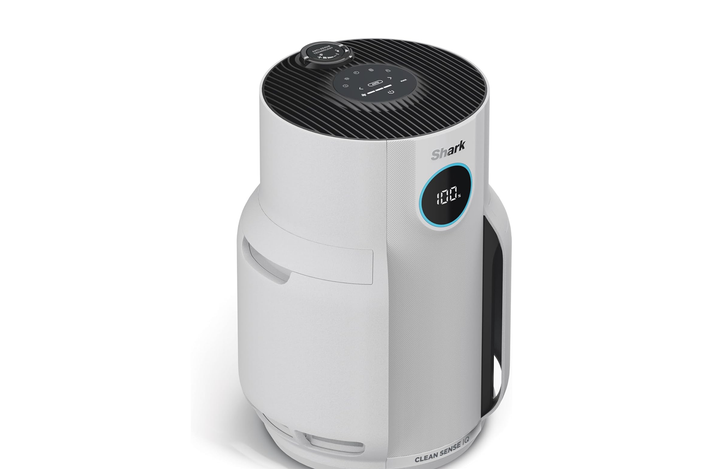
- Best Air purifier for bad odours
- CADR 60 cubic metres per hour
- Room size 60 sq m
- Control Extra cost
- Dimensions 38.5cm x 23.7cm x 26.6cm
- Weight 3.32kg
- Energy consumption 26W
- Warranty 2 years
- Noise level 35dB
- Filter type HEPA, medium particle, activated carbon
- Why we love it
- Filter only needs changing once every five years
- Has add-on anti-odour cartridges
- Take note
- No app support
- Looks a bit weird
While it’s not the best-looking machine, Shark’s neverchange 5 air purifier worked wonders in my kitchen. It was one of the most effective models for zapping odours, and it left my kitchen smelling surprisingly fresh, even after cooking a chicken curry and chopping onions. It works so well because it features some sweet-smelling anti-odour cartridges. You can choose between different strength settings, and the cartridges last a couple of months. It’s a great touch, and it’s not particularly overpowering.

As for the purifier itself, it removes allergens, mould and bacteria, cleaning the air and circulating it through the room after multi-stage HEPA filtration, including a carbon layer, together capturing 99.97 per cent of pollutants and allergens down to 0.1 microns. The display even shows the size of each particle it removes.
The auto mode adjusts the fan speed to suit the air quality and turns off when the air quality is perfect, and the built-in sensors track changes in the air in real time. The digital display reports the percentage of clean air, the time left to clean and the particle amount, so you can be confident the air is as clean as it can be.
The biggest perk of the model is its filter. Shark says the filter will last a whopping five years before it needs replacing. That’s fantastic and blows the competition out of the water. Accurate? I’ll have to take Shark’s word for now. The only real downside is that it doesn’t have an app – everything has to be controlled using the buttons at the top of the machine.
10Russell Hobbs fresh air two-in-one dehumidifier and air purifier

- Best Air purifier and dehumidifier
- CADR Unspecified
- Room size 20 sq m
- Control No
- Dimensions 21.8cm x 20cm x 31.5cm
- Weight 2.8 kg
- Energy consumption 40W
- Warranty 1 year
- Noise level 35dB
- Filter type Three-layer filter
- Why we love it
- Sleek design
- Night mode
- Include dehumidfier
- Take note
- Small dehumidifier tank capacity
This is a compact two-in-one dehumidifier and air purifier designed for small to medium-sized rooms.
It looks more like a next-gen games console than a dehumidifier or air purifier, making it a good choice for a teen’s bedroom. In terms of air purification, though, it boasts a filter capable of trapping up to 99.95 per cent of microscopic particles, including dust, pollen, pet dander, smoke, and other airborne allergens as small as 0.3 microns.

This makes it a solid choice if you struggle with hay fever, asthma, or other respiratory sensitivities. The night mode is handy for light sleepers, too. At just 35db, it runs at a gentle hum – ideal for uninterrupted sleep or study sessions. You can increase the fan speed during the day to tackle stuffy air, then tone it down at night for peace and quiet.
11Dyson purifier cool PC1 air purifier

- Best High end air purifier
- CADR Unspecified (Dyson doesn’t use this metric)
- Room size Up to 81 sq m
- Control App, voice and remote control
- Dimensions 105cm x 20.4cm x 12cm
- Weight 4.73kg
- Energy consumption 40W
- Warranty 2 years
- Noise level 61dB
- Filter type HEPA, carbon air purifier
- Why we love it
- Sleek, modern design that fits any room
- Quiet but powerful airflow
- Effective filtration for allergens and pollutants
- Take note
- Premium price tag
If you want a stylish, quiet purifier that doubles as a fan and keeps your air fresh year-round, Dyson’s purifier cool PC1 is a solid pick. A clever all-in-one appliance that cools you down while purifying the air around you, Dyson’s device is perfect if you want a fresher, healthier home environment without sacrificing style. It automatically senses, captures, and traps pollutants, including microscopic allergens as small as 0.1 microns.
The built-in sensors constantly monitor your air quality and adjust airflow as needed, so it’s energy efficient, plus you can control and check your home’s air quality from anywhere using the MyDyson app. Voice control compatibility is a nice touch if you want hands-free operation, and the 350-degree oscillation means you can stay cool wherever you are in a large room.
It’s not cheap, but the build quality and performance feel premium. The magnetised remote is handy, and the bladeless design means it looks good and stays safe around kids and pets.
12MeacoClean CA-HEPA 47x5 air purifier

- Best Basic air purifier
- CADR Not specified
- Room size Up to 78 sq m
- Control Touch button
- Dimensions 40.9cm x 32.4cm x 16.2cm
- Weight 4.2kg
- Energy consumption 55W
- Warranty 2 year
- Noise level 24-47dB
- Filter type Dust filter, H11 EPA, activated charcoal, PCO &UVC, ioniser
- Why we love it
- Multi-layered filtration system for allergens, smoke, VOCs and more
- Quiet enough for bedrooms and offices
- Easy to set up and use
- Take note
- No wifi or app control
- No smart air quality sensor
A strong performer for purifying large rooms, this appliance has a sophisticated five-stage filtration system and an H11 HEPA filter that traps everything from dust and pollen to smoke and pet dander. It’s a great choice if you want something reliable and effective without paying for extra features you might not use, such as voice or app control.
It features three fan speeds, a sleep mode, and a filter change indicator. While some buyers might appreciate this simplicity, others might find the lack of innovative features more frustrating than freeing. For example, there’s no air quality sensor, meaning it won’t detect pollution spikes or automatically ramp up its settings to deal with them. You’ll have to adjust it manually, which means the onus is on you to sense when to dial up air purification and vice versa – often a tricky job.
It’s functional and minimalist in design, but a little on the bulky side. That said, it's a solid, affordable option if you’re looking for powerful, reliable filtration and don’t mind the basic controls or lack of smarts.
13Gastroback AG+ portable air purifier
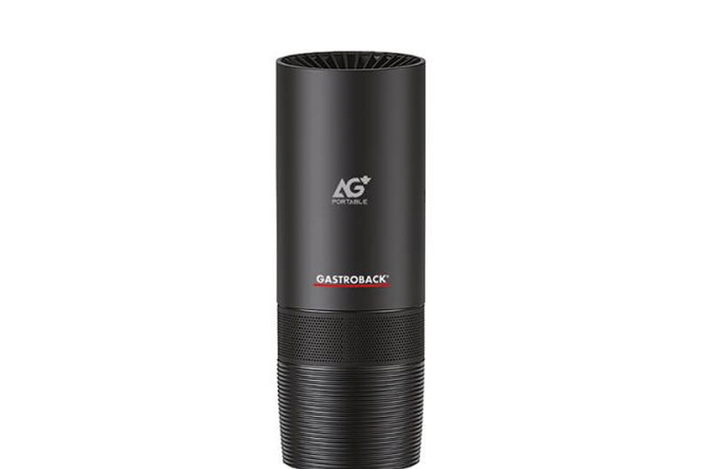
- Best Portable air purifer
- CADR 25 cubic metres per hour
- Room size 7 sq m
- Control No
- Dimensions 6.8cm x 18.8cm
- Weight 400g
- Energy consumption 3W
- Warranty 2 years
- Noise level 30-52dB
- Filter type Activated carbon, silver ion filter and anion air filter
- Why we love it
- Has a USB port for connecting to laptops
- Purifies automatically once plugged in
This small, sleek purifier is so whisper-quiet on its lowest setting that I had to check if it was even switched on. Suitable for rooms up to 7 sq m, it has a USB connection rather than a plug, so it would be handy next to a computer or even in a car. It’s extremely simple to set up, and it enters automatic mode as soon as it’s plugged in, adjusting fan speed automatically to suit the air quality. This can also be adjusted manually.
The filtering process includes four-stage air disinfection, with a silver ion coating to destroy microorganisms and activated carbon to tackle smells and gases. Depending on usage, it’s the filter lasts about every three to six months. I loved how portable and light it was, at just 400g. If you want to improve the air even when you’re driving, I still think it’s a good bet.
14Dyson purifier humidify+cool formaldehyde

- Best For all-in-one purification, cooling and humidifying
- CADR Not stated (Dyson uses its own testing standard)
- Room size Up to 81m³ (approx)
- Control Touch panel, remote, app, Alexa/Google
- Dimensions 92cm x 28cm x 31cm
- Weight 8.2kg
- Energy consumption Up to 45W
- Warranty 2 years
- Noise level 23-61dB
- Filter type HEPA H13 sealed system, activated carbon, catalytic filter (formaldehyde)
- Why we love it
- Captures 0.3 and 2.5-micron particles with ease
- Doubles as a humidifier and cooling fan
- App is user-friendly and packed with features
- Take note
- Premium price
- Not very portable
A premium multitasker, this model combines air purification, cooling and humidifying in one sleek tower with 10 speed settings. It doesn’t just capture pollutants, it also destroys formaldehyde continuously, thanks to a built-in catalytic filter.
In my at-home tests, it reduced 2.5-micron particles by 100 per cent and 0.3-micron particles by more than 50 per cent in just 30 minutes – an impressive result for an all-in-one machine. It’s also fully sealed to HEPA H13 standards, meaning no dirty air escapes back into your room.
.png?quality=75&width=608&auto=webp 608w)
The Dyson app was one of the easiest to set up during testing. It connected instantly and gave me access to live and historical air quality data, humidity levels, temperature and even localised outdoor air conditions. You can also control the unit remotely, set schedules, or link it with Alexa and Google Assistant for hands-free operation.
As a humidifier, it uses ultraviolet light to kill bacteria in the water tank and projects cool, hydrated air across the room. This makes it a great option for dry homes or allergy-prone households, especially in winter when heating dries out the air.
It’s not the smallest unit, and you’ll need to refill the water tank regularly if using the humidifying function often. But if you’re looking for a hi-tech, multi-use purifier that looks great and performs even better, this Dyson model is well worth the investment.
Your questions on air purifiers answered
What is the best air purifier?
My tests found that the Levoit core 400s is the best air purifier you can buy. It’s packed with features, and it’s so sensitive to air quality that it even detects when a dog enters a room. If you’re looking to spend less, the Coway airmega 50 is tidy and inexpensive but effective in most rooms.
What does an air purifier do?
Professor David Fairen-Jimenez, head of the absorption and advanced materials lab at the University of Cambridge, says: “We spend so much time indoors that the quality of the air will impact the quality of health and life.” Air purifiers filter out various particles and pollutants to improve air quality.
The contaminants could be anything from volatile organic compounds (VOCs) generated from doing work around the house (if, for example, you have freshly painted walls) to car fumes coming in through your windows when you air your home, or the fumes that result from frying food.
How do air purifiers work?
Most work by drawing the air into the machine and running that air through a filter (sometimes several filters) to grab small particles of pollen, pollution, dust and – depending on the type of filter – viruses and smaller particles. It then sends the clean air out into the room again. Some also use something called ultraviolet germicidal irradiation to ‘kill’ any viruses caught in the air.
It’s worth noting it isn’t only catching small particles that’s tricky, but also PM 2.5, or fine particulate air pollution, which is another area researchers are continually looking into.
Do air purifiers remove dust?
In a word: yes. The thing to know about air purifiers is that their efficacy depends largely on the filtration system and the size of the particles they can capture. The gold standard in filters is the high-efficiency particulate air filter (aka the HEPA filter), which captures at least 99.97 per cent of 0.3-micron and larger particles. The naked eye can’t see particles smaller than 10 microns in size, so, yes, most air purifiers will remove dust from the air.
Do air purifiers help with allergies?
If your allergies are triggered by pollution or other fine particles in the air, a good purifier is likely to help.
Studies carried out by Lung India show that asthma patients who were sensitised to dog and cat fur, dust mites, and birch and tree pollen found symptoms improved after 10 weeks of sleeping in a room where there was a purifier containing a HEPA filter.
That said, even the best one has limitations – you will still be breathing in allergens when you leave your home and open windows – but, on the whole, if you notice your house being clean and ventilating well reduces allergies, it’s safe to assume an air purifier will also have a positive effect.
Can air purifiers help remove smells?
A good air purifier can help reduce or even eliminate unpleasant smells entirely, while making the air you breathe healthier and fresher.
Do air purifiers help with mould?
While air purifiers won’t help treat active mould in your home, they can help capture spores from the air, preventing them from reproducing and spreading throughout your home, so these gadgets are a great way to control the spread of airborne mould particles.
Should you buy a combined air purifier and dehumidifier?
Air purifiers and dehumidifiers offer the perfect combo. They both work at pulling things out of the air to make it fresher for you. Air purifiers use a filter to pull allergens and dust out of the air, while dehumidifiers pull moisture out of the air, which can cause mould growth. They’re both great appliances on their own, but together, they’re even better.
What is the clean air delivery rate?
The CADR (clean air delivery rate) indicates how quickly the purifier removes contaminants from the air, but it shouldn’t be the sole factor in deciding which one to choose. It’s advised to aim for a CADR that is at least two-thirds of your room size in square metres. For example, if your room is 20 sq m, opt for an air purifier with a CADR of at least 240 cubic metres per hour.
Meet the experts
Henry Burridge: Associate professor in environmental fluid mechanics, Imperial College London.
Professor David Fairen-Jimenez, head of the absorption and advanced materials lab at the University of Cambridge.
Want more recommendations? Keep your floors free from dust, with our pick of the best robot vacuum cleaners

.png?quality=75&width=156&crop=3%3A2%2Csmart&auto=webp)



.png?quality=75&width=156&crop=3%3A2%2Csmart&auto=webp)
